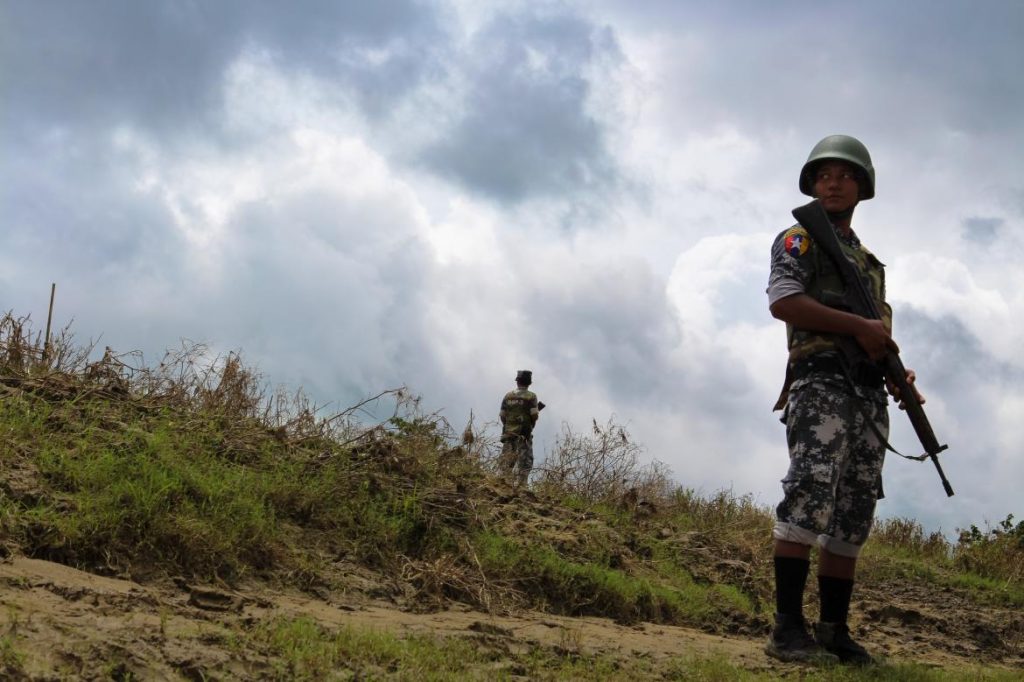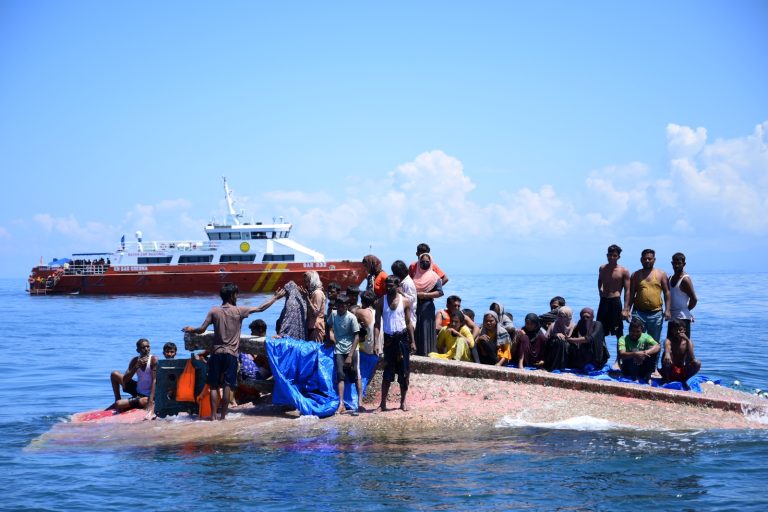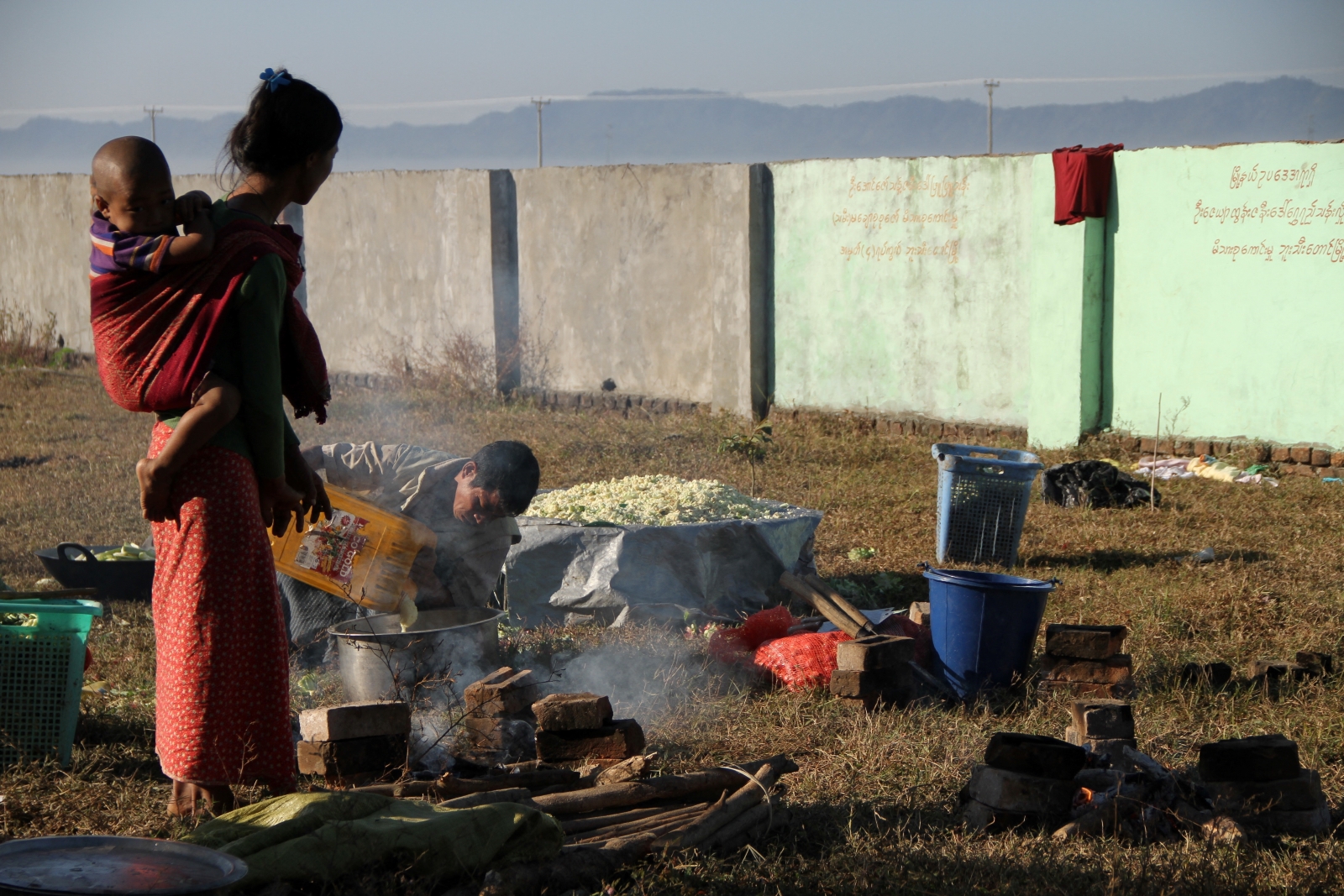A government-arranged trip to northern Rakhine State brought welcome opportunities to assess the situation on the ground but the picture remains blurred by translation and logistical difficulties, as well as residents’ fear of the authorities.
By OLIVER SLOW | FRONTIER
IT WAS only on the penultimate day of our five-day government-sponsored media trip to northern Rakhine State that we were finally able to visit one of the three villages we had requested permission to enter.
Kyar Gaung Taung is about a two-hour drive north of Maungdaw town, and a stone’s throw from the Naf River, which marks the border between Myanmar and Bangladesh. It was in this area – the very far reaches of the troubled state – where security forces stood accused of some of the gravest human rights abuses over the past nine months.
The abuses – which include charges of extrajudicial killings, mass rapes, arson and arbitrary arrests – are alleged to have taken place during “clearance operations” in the aftermath of the October 9 attack on Border Guard Police outposts by suspected Rohingya militants. Despite fierce international pressure, the authorities have continuously denied that any wrongdoing was committed on behalf of the security forces.
As well as Kyar Gaung Taung, we had requested permission to enter Yae Khat Chaung Gwa Son and Dar Gyi Zar, but were told we could not visit them due to time constraints. The first three days of the trip, which was organised by the Ministry of Information, were spent in villages around Buthidaung Township, mainly in communities affected by recent violence that the government says is linked to the insurgent group calling itself the Arakan Solidarity Rohingya Army.
Support more independent journalism like this. Sign up to be a Frontier member.
The emergence of the insurgency is an important part of the complex story in northern Rakhine, but as some of the first journalists to enter the region since October, we were keen to visit areas affected by the clearance operation. The United Nations estimates that 75,000 people, mainly Rohingya, have fled over the border to Bangladesh since October, although some have since returned.
First-hand accounts
On the morning of June 15, the group of more than a dozen journalists from local and international media outlets travelled to Kyar Gaung Taung with a heavy security presence, including officers from the police force, the Tatmadaw and the Border Guard Police.
The BGP had been a constant presence during our trip. Each village we entered the BGP officers followed closely behind, holding aloft their rusting guns – for our own protection, we were told.
The fear that villagers – mainly Muslims who identify as Rohingya – felt towards the security officers was evident. On more than one occasion, I saw them shrink and rush into their homes as the officers passed. Whether this fear was based on experience, we couldn’t tell. But the security officers’ presence made it difficult to do our jobs properly.
edited-6.jpg
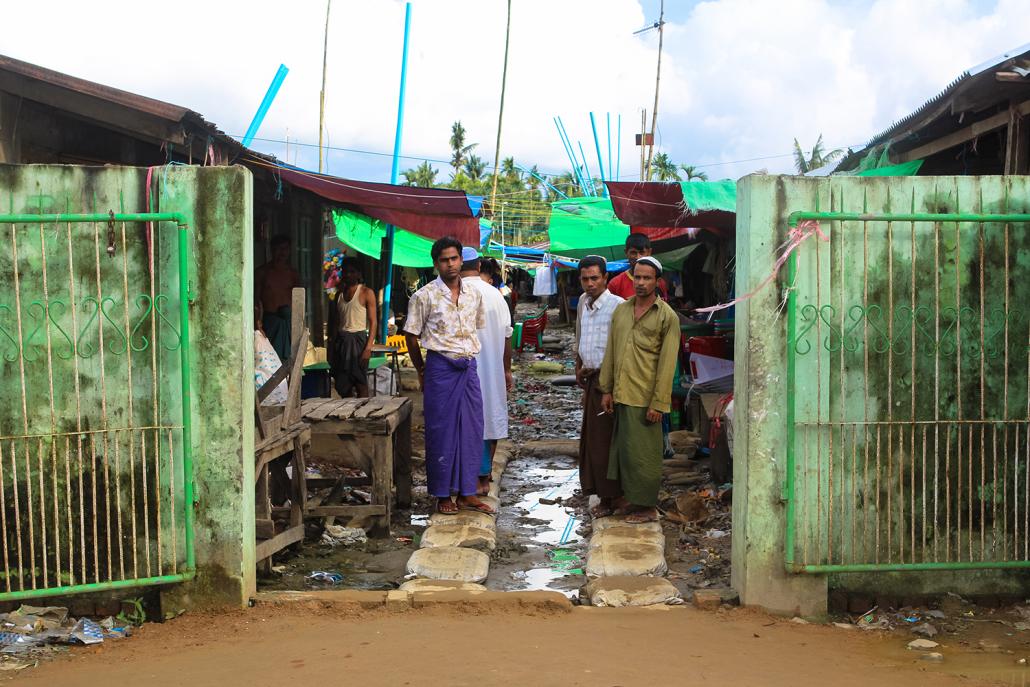
Oliver Slow | Frontier
At Kyar Gaung Taung we were able to negotiate with the Ministry of Information officials that no one from the government or security forces would come with us into the village (that said, I’ve been reporting in Myanmar for long enough to know that we would still have been watched by government informants).
After about an hour’s walk we came to a secluded spot on the far reaches of the village. Here, one woman told reporters how, during clearance operations in mid-November last year, she said she had witnessed her father being burned alive inside the family home by security forces. Standing in the spot where she said she found her father’s charred remains, she told us that her mother had been arrested and imprisoned by authorities for allegedly filing a false complaint.
Then a group of about a dozen women from a neighbouring village stepped forward to tell of how their husbands and sons, including two children, had been arrested during the security operations in November 2016. Most did not have access to a lawyer, and the men and children remained in detention, most of them at Buthidaung Prison.
“My son was working in the field when he was arrested. He did nothing wrong,” said one woman.
The evening before, the journalists had been given a guided tour of the BGP outpost in Kyikanpyin village, which along with two other outposts in the area was attacked on October 9. BGP officers told us that the attackers had outnumbered the police by five to one on the night of the attacks.
In a press briefing afterwards, BGP commander Thura U San Lwin said reports of violations were false and repeated the official line that villagers had set fire to their own homes in order to elicit sympathy from the international community.
Back in Sittwe the day after the Kyaung Gaung Taung visit, the journalists were given a press briefing by senior officials from the Rakhine State government, including chief minister U Nyi Pu, who is a member of the National League for Democracy.
Questioned about the testimonies we had heard the day before – and others that have emerged in recent months – Nyi Pu said some “minor accidents” could have happened during the operations.
Let’s be clear: these are not minor accidents, but very serious accusations – and they will remain accusations until the government allows a truly independent investigation that can test their veracity.
Last week in Yangon, Myanmar’s National Security advisor U Thaung Tun told reporters that the government rejected a United Nations fact-finding mission into human rights in the country – with a particular focus on Rakhine State – because it would “aggravate” the situation.
If security forces really have committed no wrongdoings, then surely it would be in their best interests to allow the fact-finding mission to investigate, and clear the air once and for all.
Insurgency
It was clear from the itinerary that the government wanted us to focus our reporting from the trip on the emergence of the Rohingya insurgency in northern Rakhine. The government has said that the ARSA is responsible for a number of violent incidents in the area in recent months, including cases of kidnapping, beheadings, stabbings and explosions.
One of our first visits was to Maung Hna Ma, a tiny village on the banks of the Mayu River. In the middle of a night in early July, about a dozen masked men descended on the house of Abdu Sulwon and kidnapped him. His body was found in a ravine near the village on July 15, state media reported.
Speaking outside the family home, his mother Morya Hatu told Frontier that she thought he had been kidnapped because he was regarded as being an informant for the government, which she said was not true.
edited-19.jpg
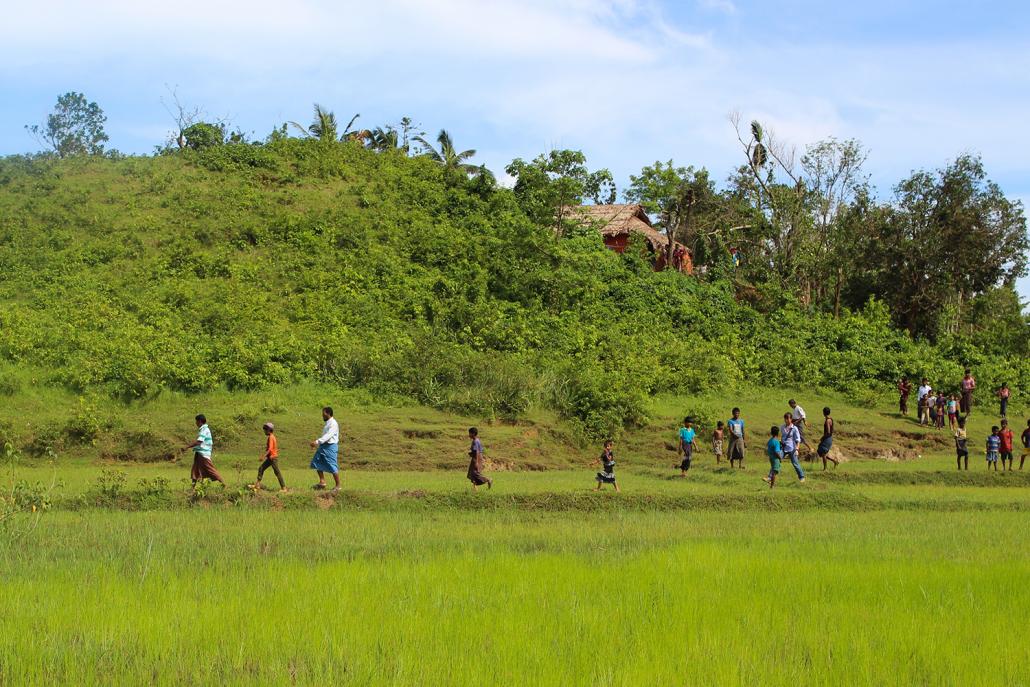
Oliver Slow | Frontier
At the briefing in Yangon, security advisor Thaung Tun was quoted as saying that at least 44 civilians have been killed and 27 others have disappeared since October.
An unverified Twitter account claiming to represent the ARSA said in May that the group “never attacked or killed any civilian”.
On the third day of the trip we were taken to Tin May where on July 9 – just four days before we arrived – BGP officers investigating a report that militants were hiding in the village clashed with four armed men. Two were killed and two arrested.
It was on the way back to Buthidaung from Tin May that we deviated from the government’s schedule for the first time. Travelling along the river, we passed Maung Hna Ma, which we had visited the day before and met with the family of Abdu Sulwon. A group of women standing on the bank began shouting to us and pointing towards something in the village.
After much negotiation with government officials, we returned to the village to investigate – albeit with armed police looming over every interview.
There, we met a group of women who spoke of a culture of fear in Maung Hna Ma each time security forces came to the village. One woman said her husband had run away out of fear of being arrested and the family had no money.
Then we spoke with Marmuda Hatu, who told us her son Saad Ullah had been arrested, despite there being no evidence of him collaborating with the militant group.
“My son has nothing to do with terrorism,” she said, adding that he had been sentenced to six months in prison, but had not been released eight months later. She said the family could not afford to provide him with a lawyer.
During the trip, it was difficult to assess how organised the insurgent group is. BGP commander San Lwin said the group had informants in every village, but one of the villagers we spoke to in Kyar Gaung Taung denied that was the case.
San Lwin said the discovery of training camps and information gathered from interrogations showed that the group is still active in northern Rakhine. But he also conceded that some of the killings since October could be local disputes unrelated to the group.
Logistical challenges, ethical questions
Having closely followed developments in Rakhine State since the 2012 violence – and particularly since the October attacks – the trip presented an opportunity to get at least some grasp of the situation on the ground, even if it was only the “situation” that the government wanted us to see.
Before departing I had two major concerns. The first was that our presence on the trip would likely be used by the government for propaganda purposes. The international community has been urging the government to grant the media unhindered access to investigate the situation on the ground. There was no doubt in my mind that the government would use our presence to say that it was allowing access (sure enough, we made the front page of the state-run Global New Light of Myanmar three days in a row).
My second concern was more serious: the safety of those we interviewed. In late December, a group of local journalists visited northern Rakhine State on a government-organised trip. Two days later, the decapitated body of a man they had spoken to was found near his home. I was also worried that people who spoke to us could be arrested by security forces after our visit.
We had asked authorities if there were any guarantees they could give with regards to the safety of the people we spoke to. They said they couldn’t because they “didn’t know what the terrorists would do”.
In the end, the decision was made to be as careful as possible in interviews, not identify anybody who we spoke to away from the security forces, and get contact details from as many people as possible so we could find out about any developments after we left.
It was a challenging reporting environment – certainly one of the most challenging I have experienced.
We spent most of the time travelling between villages rather than reporting. In northern Rakhine, there is almost no infrastructure; we visited villages on rickety hand-made boats. The time constraints made it difficult to get a clear picture of the situation.
The lack of official translators was another issue. The trip was for international journalists and each organisation could only send one person, so we had expected to be provided with translators from Myanmar to English and from the Rohingya dialect into English.
Instead, we were reliant on government officials with limited English, meaning that even getting basic facts was difficult. In the end, we relied heavily on one of the English-speaking Myanmar journalists who participated in the trip.
The government has said it is working to implement the interim recommendations submitted by the Advisory Commission on Rakhine State, which is headed by former UN Secretary General Kofi Annan. One of those recommendations includes allowing independent journalists free access to the area.
This media trip was a welcome first step, but the government needs to go much further, and allow journalists truly free and independent access into the area, in order to investigate the real situation


